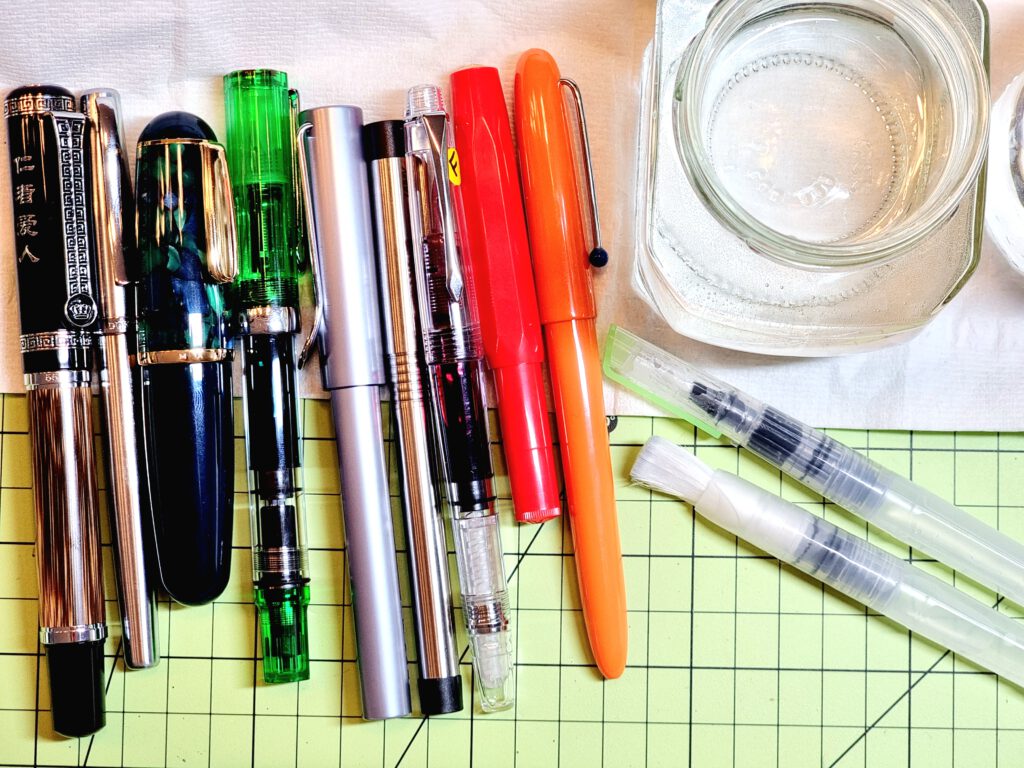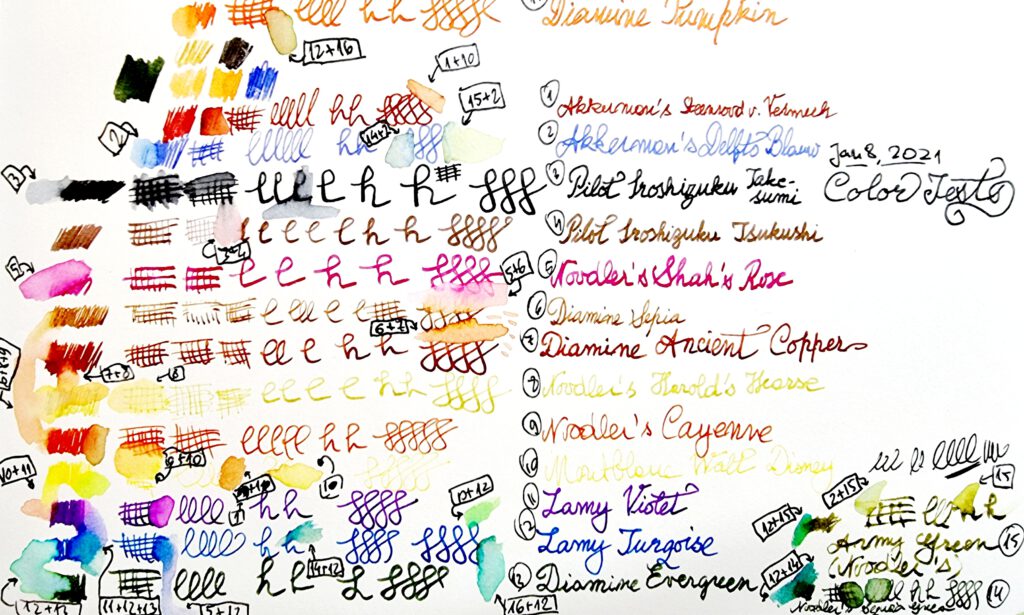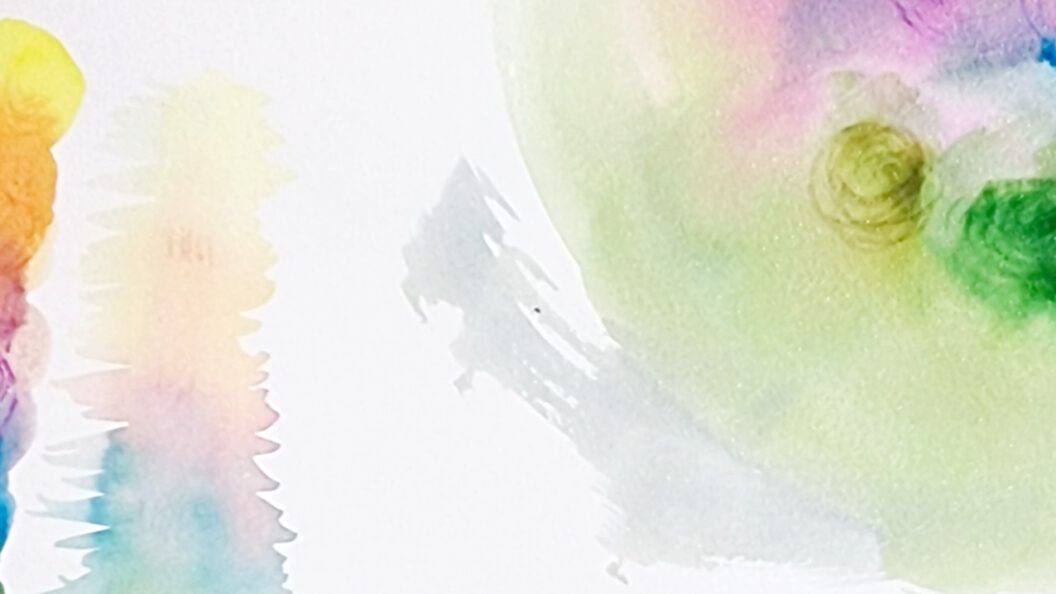TL;DR: Making a watercolor painting in ink is not as easy as it seemed when I was a kid. Here, one of my early, but still recent, processes: (1) Ink the fountain pens, (2) Explore ink palette for the day, (3) Test ink mixtures and water brush effects, (4) Draw in pen, (5) Spread with water brush.

Figure H depicts the watercolor. But, to get there, there are some steps… They are all part of a simple process I used for a while. The main advantage of this process, for me, is that it allows focusing on colors and on pens. The main drawback is that it does not optimize for the size of the carry, or for the time it takes to set up a drawing.
The first three steps are about pen and ink exploration:

Step 1: Ink the fountain pens (see Figure 1). Not much to say here. A typical inking process appears in my earlier post Humble Beginnings.
I prefer to ink more pens than I use, also because I may use the same inked pens for several weeks, for different drawings.

Step 2. Explore ink palette for the day and test nib strokes (see Figure 2). This is fun with color, plus making sure the nibs are what I need for the drawing.
I try to use each pen with various strokes. I label each pen-ink combination, and I sticker each pen with the label.
I then try to understand how the ink may act under water – although I could use pre-existing swatches for this, or reviews, or own knowledge, this process works for any inks, including those experienced for the first time.
I also label the color mixes I particularly like.

Step 3. Test ink mixtures and water brush effects (see Figure 3).
Progressing across the color spectrum I am interested in – in this case, the full range -, I apply a small swatch of that color. I typically draw a circle and fill it in, but sometimes I also try out geometrical shapes or other filling patterns. Repeat until all colors are swatched.
Then, on the page with color swatches, with a water brush, I dilute each color with water and, separately, blend between the colors.
Color mix, swatched.
The actual drawing starts here:
Step 4. Draw in pen. This is the sketch (contour) from which the watercolor will emerge.
Sketching is leisurely, no need to be too precise, as the water brush will spread around the color.
Step 5. Spread colors with the water brush. This step adds shade (form and body) to the painting.
Water brush in one hand, napkin in the other to prevent unintended water leaks, I work out every part of the watercolor I feel needs it.
That’s it.
Enjoy the day!

